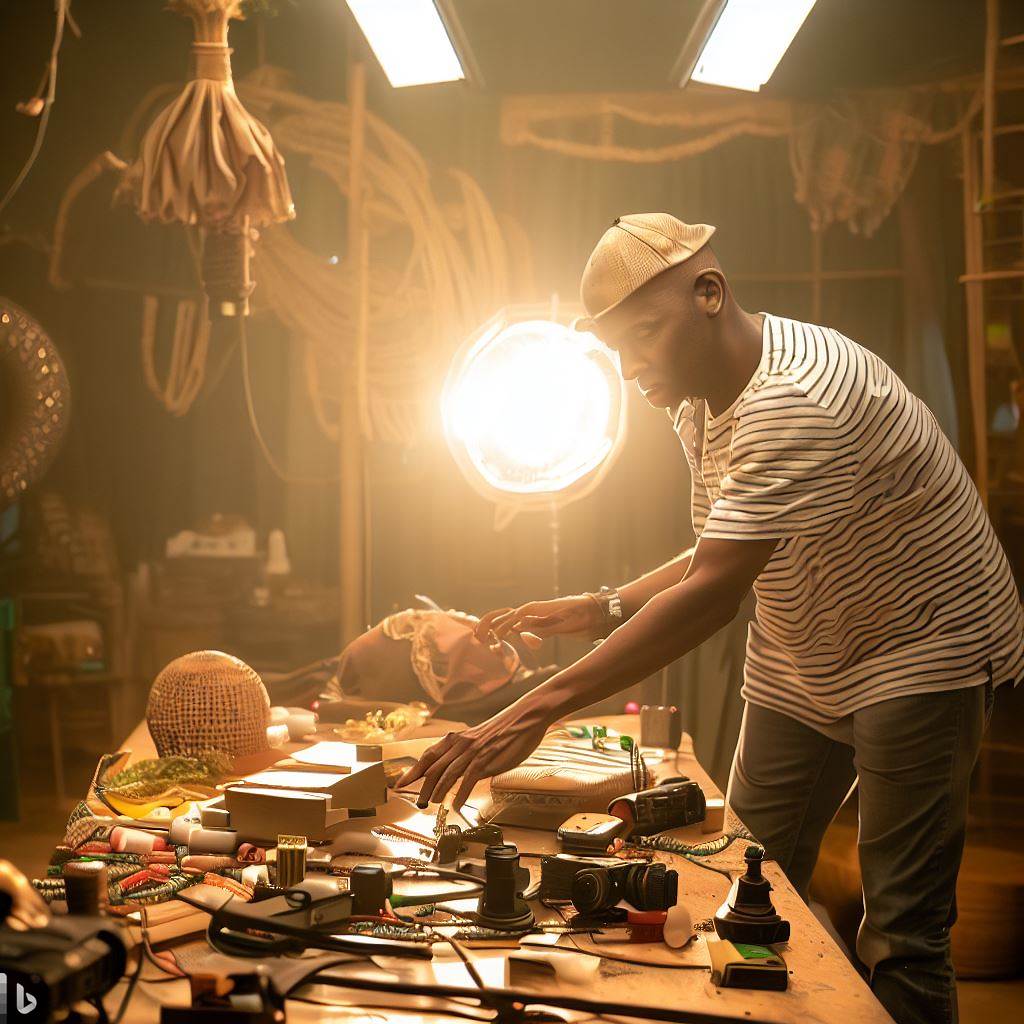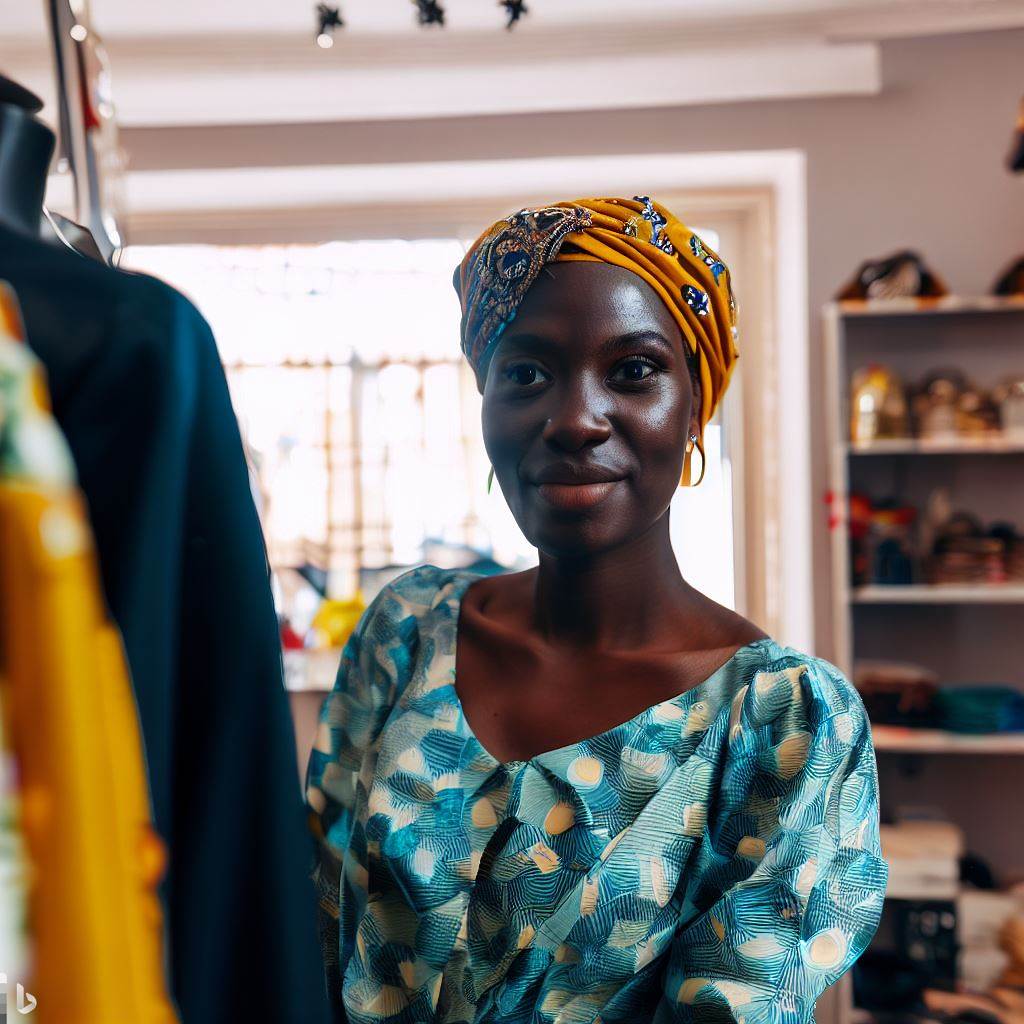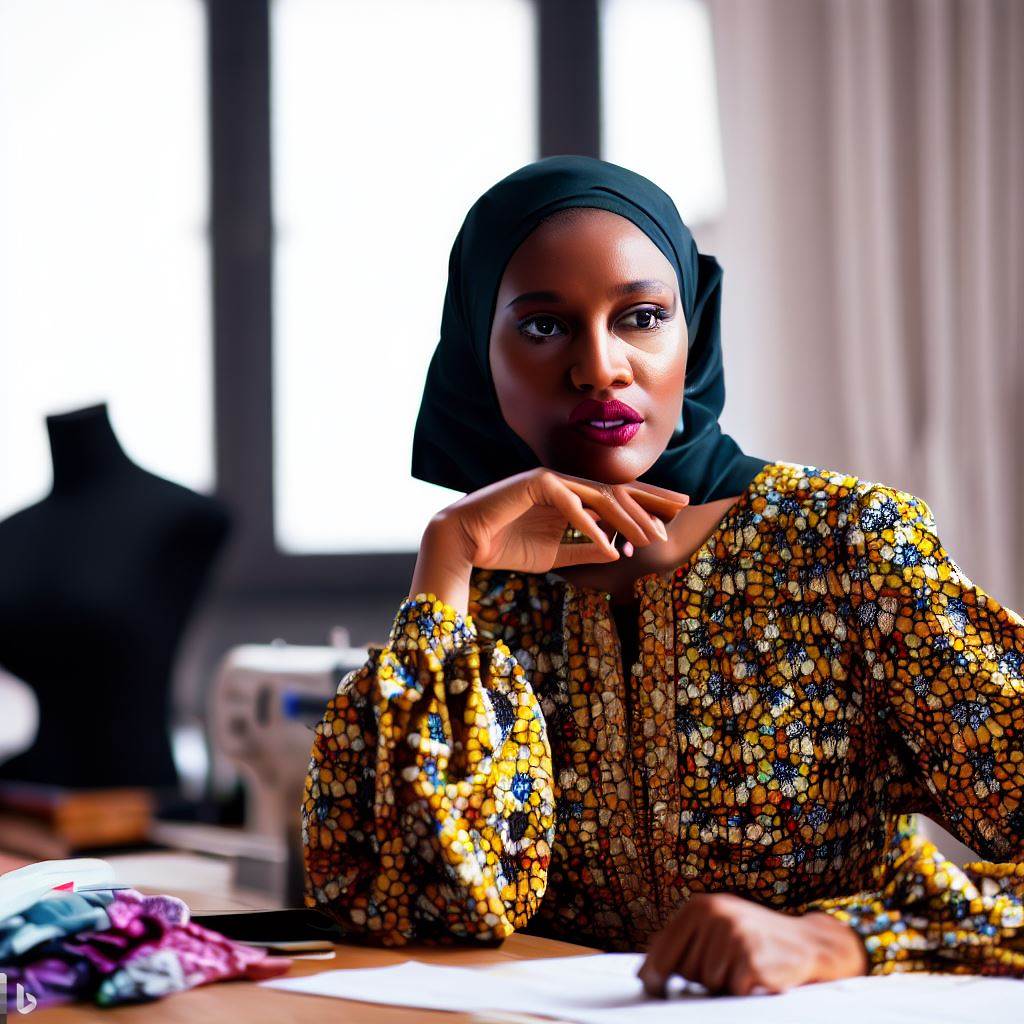Introduction
Production design in Lagos, Nigeria plays a significant role in the film industry, encompassing various elements that contribute to the overall visual experience.
The importance and impact of production design cannot be overstated, as it sets the tone, enhances storytelling, and immerses the audience in the narrative.
Lagos, with its rich cultural heritage and diversity, provides a unique backdrop that shapes its production design, making it distinct and vibrant.
The History and Evolution of Production Design in Lagos
Lagos, Nigeria’s cultural hub, boasts a rich history in the development of production design.
Over the years, the film industry’s dynamics in Lagos have spurred significant evolution in production design.
Initially, Lagos’ production design was simplistic, focusing on creating story-serving sets due to limited resources.
It primarily aimed at crafting relatable, realistic settings to engage the audience effectively.
Yet, as Lagos’ film industry surged, production design’s role expanded in bringing stories to life.
Development milestones included advanced technology adoption, access to international films, and Lagos-based film schools.
Kunle Afolayan’s “The Figurine: Araromire” significantly impacted Lagos’ production design.
This acclaimed film stretched design boundaries, highlighting Nigerian filmmakers’ talent and creativity.
This success catalyzed visually stunning Lagos productions.
Nollywood’s emergence furthered production design’s growth in Lagos, aiming for international standards.
More design companies and studios emerged, meeting the demand for well-crafted films.
Nollywood’s influence on Lagos’ production design is undeniable, attracting increased funding for design.
Transform Your Career in Nigeria
Discover unmatched expertise with our personalized Career Consulting service. Navigate Nigeria’s job market with a strategy tailored just for you.
Get StartedModern technology and equipment innovations propelled Lagos’ production design to new heights, creating breathtaking visuals.
Recent years witnessed Lagos hosting film festivals and events celebrating production design.
These platforms promote local talent and collaborations with international experts.
Government support, including film villages and incentives, nurtured Lagos’ production design industry.
In conclusion, Lagos’ production design has transformed remarkably, becoming integral to filmmaking.
Nollywood’s influence and visually stunning productions have elevated production design.
With sustained support, Lagos promises further innovation and creativity in production design.
Read: The Future of Production Designing in Nigeria
Key Elements of Lagos’ Production Design
When it comes to production design in Lagos, Nigeria, there are several unique characteristics that define it.
From the incorporation of traditional Nigerian aesthetics to the vibrant architecture and cultural landmarks, Lagos offers a rich source of inspiration.
Let’s explore these key elements further:
A. Exploring Unique Characteristics
Production design in Lagos is characterized by its vibrant and eclectic nature. It reflects the city’s energetic spirit and diverse cultural heritage.
The designers aim to capture the essence of Lagos in their creations, immersing the audience in its unique atmosphere.
The incorporation of traditional Nigerian aesthetics plays a crucial role in Lagos’ production design.
The designers pay homage to the rich cultural heritage of Nigeria and bring it to life through their creations.
Traditional patterns, colors, and motifs are woven into the fabric of their designs, adding depth and authenticity.
Furthermore, Lagos’ production design takes inspiration from the city’s vibrant architecture.
The cityscape is a mix of modern skyscrapers, colonial-era buildings, and traditional African structures.
Designers draw inspiration from these architectural styles, incorporating elements into their set designs and creating a visual tapestry that represents the city’s dynamic nature.
B. Incorporating Traditional Nigerian Aesthetics
One of the key elements of Lagos’ production design is the incorporation of traditional Nigerian aesthetics.
The designers embrace the rich cultural heritage of Nigeria and infuse it into their creations.
The use of traditional Nigerian patterns is a prominent feature in production design.
These patterns, such as the Adire textile motifs or the Aso Oke designs, add a sense of depth and cultural significance to the sets.
They create a visual language that speaks to the audience’s subconscious, evoking a sense of familiarity and connection.
Publish Your Professional Profile, Business or Brand
Showcase your expertise, gain trust, and boost visibility instantly on Professions.ng.
Publish NowColors also play a significant role in Lagos’ production design.
Vibrant hues inspired by Nigerian landscapes, such as the lush greenery or the vibrant markets, are often used to create a visually stimulating experience.
These colors not only enhance the aesthetics but also communicate emotions and set the mood for the narrative.
C. Inspiration from Architecture, Street Markets, and Cultural Landmarks
The city of Lagos itself is a treasure trove of inspiration for production designers.
Its vibrant architecture, street markets, and cultural landmarks offer a wealth of visual references.
Lagos’ architecture ranges from modern high-rises to colonial-era buildings with their distinct architectural styles.
Production designers draw inspiration from these structures, incorporating elements that reflect the city’s urban landscape.
The fusion of modern and traditional architectural styles creates a unique visual language that is characteristic of Lagos.
Street markets are another significant source of inspiration for production design in Lagos.
The bustling markets, filled with colorful fabrics, fresh produce, and lively street vendors, capture the vibrant spirit of the city.
Designers recreate these markets on their sets, bringing to life the essence of Lagos’ street culture.
Cultural landmarks, such as the National Theatre or the Lekki Conservation Centre, also inspire production design in Lagos.
These landmarks represent the rich cultural heritage of Nigeria and serve as visual anchors for storytelling.
Designers incorporate elements from these landmarks, creating a sense of place and authenticity in their sets.
In conclusion, production design in Lagos, Nigeria, is a vibrant and eclectic blend of traditional Nigerian aesthetics, vibrant architecture, street markets, and cultural landmarks.
It captures the essence of Lagos’ energetic spirit and diverse cultural heritage.
Through the incorporation of these key elements, production designers create visually compelling sets that transport the audience to the heart of Lagos.
Read: How Nigerian Fashion Designers Impact Local Economies
The Role of Production Design in Nollywood
Production design plays a crucial role in the filmmaking process, contributing to the overall storytelling and visual narrative of Nigerian films.
This article will explore how production design enhances the storytelling process, the importance of set designs and props in creating a visually captivating film and highlight successful Nigerian films that utilized production design effectively.
1. Contributions to the Storytelling Process
Production design in Nollywood films goes beyond creating visually appealing settings; it also aids in conveying the story’s underlying messages.
Through the choice of colors, props, and overall set design, production designers can evoke specific emotions and enhance the audience’s understanding of the film’s themes and characters.
For example, in a film set in Lagos, the production design can reflect the vibrant and chaotic nature of the city through bright and contrasting colors, busy street scenes, and intricate set details.
This helps to immerse the audience in the narrative and provide a more authentic experience.
2. Enhancing the Visual Narrative
The visual aspect of a film is crucial in capturing the audience’s attention and keeping them engaged throughout the story.
Production design plays a fundamental role in enhancing the visual narrative by creating visually stunning and memorable set designs.
Set designs and props in Nigerian films can transport the audience to different locations, eras, or even imaginary worlds.
The attention to detail in the production design allows filmmakers to create a believable and immersive environment that adds to the overall cinematic experience.
Through the careful selection of props and set dressings, production designers can also provide subtle cues and foreshadowing elements that enhance the audience’s understanding of the story.
For instance, a seemingly insignificant prop in the background may hold a symbolic meaning that adds depth to the narrative.
3. Effective Utilization in Nigerian Films
Several Nigerian films have effectively utilized production design to enhance their storytelling and visual appeal.
One notable example is the film “The Wedding Party” directed by Kemi Adetiba.
In “The Wedding Party,” the production design team successfully created elaborate and visually stunning sets that showcased the opulence and grandeur of a Nigerian wedding.
The attention to detail in the decorations, costumes, and overall set design helped to transport the audience into the world of the film and immerse them in the celebration.
Another successful example is the critically acclaimed film “Lionheart” directed by Genevieve Nnaji.
The production design in “Lionheart” played a crucial role in capturing the essence of the Nigerian culture and its rich heritage.
The use of traditional Nigerian architectural elements and carefully selected props added authenticity to the film and contributed to its overall success.
Overall, production design is an integral part of the filmmaking process in Nollywood.
It not only enhances the visual narrative but also contributes to the storytelling process by creating immersive environments and conveying underlying messages.
The successful utilization of production design in Nigerian films, such as “The Wedding Party” and “Lionheart,” showcases its importance in creating captivating and memorable cinematic experiences.
Publish Your Professional Profile, Business or Brand
Showcase your expertise, gain trust, and boost visibility instantly on Professions.ng.
Publish NowRead: Fashion Design in Nigeria: Tips for Aspiring Creatives

Challenges and Constraints Faced by Production Designers in Lagos
1. Limitations and Constraints:
- Limited access to suitable locations for filming due to congestion and urban development.
- Restrictions imposed by local authorities regarding set constructions and modifications.
- Lack of infrastructure and facilities to support large-scale production designs.
- Insufficient time for pre-production planning and set preparation.
- Inadequate communication and coordination between production teams and local authorities.
2. Budgetary Limitations and the Need for Creative Solutions:
- Tight budgets that often restrict the ability to create visually impactful sets.
- Limited access to high-quality props, costumes, and equipment without paying premium prices.
- The need for resourcefulness in sourcing materials and finding cost-effective alternatives.
- Creative problem-solving to stretch limited budgets and deliver visually appealing designs.
- Collaboration with local artisans and craftsmen to create unique and affordable set pieces.
3. Lack of Trained Professionals and Resources for Production Design in Nigeria:
- Shortage of skilled professionals with expertise in production design and art direction.
- Limited educational programs and training opportunities for aspiring production designers.
- The absence of specialized workshops and courses on production design in Lagos.
- Difficulty in finding experienced set decorators, graphic designers, and art department assistants.
- The need to invest in training initiatives and mentorship programs to nurture local talent.
In review, production designers in Lagos face several challenges and constraints that impact their ability to create visually stunning designs.
The limitations and constraints regarding suitable locations, set constructions, and infrastructure hinder the potential for grand productions.
Budgetary limitations further restrict their creative freedom, making it necessary to find cost-effective solutions and collaborate with local artisans.
Additionally, the lack of trained professionals and educational resources presents a hurdle in building a strong talent pool.
Despite these challenges, production designers in Lagos continue to showcase their resourcefulness and creativity, adapting to the unique circumstances to create compelling visual experiences.
Read: A Look into Fashion Design Schools in Nigeria
Discover More: Spotlight on Top Nigerian Designers: Who’s Shaping the Future?
Emerging Trends in Lagos’ Production Design
Production design in Lagos, Nigeria has witnessed a significant transformation in recent years.
With the rise in the Nigerian film industry, commonly referred to as Nollywood, there has been a growing demand for innovative and visually captivating designs that enhance the storytelling process.
In this blog section, we will explore the current trends and innovations in production design in Lagos, the incorporation of modern elements and technologies into traditional designs, and the efforts to incorporate sustainability and environmentally friendly practices.
A. Exploring Current Trends and Innovations in Production Design in Lagos
In Lagos, production designers have been pushing boundaries and exploring new dimensions to create visually stunning sets.
One prominent trend is the fusion of traditional Nigerian aesthetics with contemporary design elements.
This juxtaposition of old and new creates a unique visual language that reflects the country’s rich cultural heritage while embracing modernity.
Another emerging trend is the use of vibrant colors and bold patterns. Nigerian culture is known for its vibrant and diverse color palette, which production designers have been incorporating into their sets.
These vivid colors not only add visual appeal but also evoke emotions and enhance the overall cinematic experience.
Moreover, there has been a shift towards more immersive and interactive production design.
With advancements in technology, designers are now able to create intricate and detailed sets that transport viewers into the world of the film.
This includes the use of virtual reality, augmented reality, and interactive props, allowing the audience to engage with the story on a deeper level.
B. Incorporating Modern Elements and Technologies into Traditional Designs
While traditional Nigerian designs hold a significant place in the hearts of the people, there is a growing inclination towards incorporating modern elements and technologies into these traditional designs.
Designers are embracing contemporary materials, techniques, and technologies to add a fresh perspective while maintaining the essence of Nigerian cultural aesthetics.
For instance, in the production of period films set in colonial Nigeria, production designers are incorporating modern lighting techniques to create a visually captivating atmosphere.
They use lighting to highlight the contrast between the traditional Nigerian architecture and the influence of colonialism, thus adding depth and nuance to the storytelling.
Furthermore, advancements in digital effects have enabled designers to seamlessly blend traditional handcrafted elements with computer-generated imagery (CGI).
This synergy between the traditional and the digital not only enhances the visual quality but also opens up new creative possibilities.
C. Efforts towards Sustainability and Environmentally Friendly Practices
Alongside the focus on aesthetics and technological advancements, there is a growing awareness and effort to incorporate sustainability and environmentally friendly practices in production design in Lagos.
Designers are embracing eco-friendly materials, such as reclaimed wood, recycled props, and low-impact paints, to minimize their ecological footprint.
In addition, production designers are also actively collaborating with local artisans and craftsmen to support sustainable livelihoods and preserve traditional craftsmanship.
By incorporating handmade elements into their designs, they not only promote cultural heritage but also contribute to the local economy.
Moreover, sustainable set construction techniques, such as modular designs and reusable structures, are gaining popularity.
This not only reduces waste but also ensures cost-effectiveness and efficiency in the production process.
Lastly, production design in Lagos, Nigeria is experiencing exciting developments in terms of trends, incorporation of modern elements, and efforts towards sustainability.
With each film, designers are pushing boundaries, infusing tradition with innovation, and creating visually striking sets that captivate audiences worldwide.
These trends and practices showcase the immense talent and creativity within the Lagos production design community and position it as a hub of innovation and inspiration.
Conclusion
Production design in Lagos, Nigeria plays a significant role in showcasing the city’s unique blend of culture, creativity, and challenges.
It is an art form that deserves appreciation and exploration in Nigerian films.
By paying attention to production design, filmmakers capture the essence of Lagos and bring stories to life in a visually compelling manner.
The city’s vibrant and diverse culture provides ample inspiration for designers, allowing them to create immersive and authentic sets.
However, the challenges of working in Lagos, such as limited resources and infrastructure, only add to the ingenuity and resourcefulness of production designers.
Despite these obstacles, the commitment to telling captivating stories through production design remains unwavering.
Publish Your Professional Profile, Business or Brand
Showcase your expertise, gain trust, and boost visibility instantly on Professions.ng.
Publish NowAs readers, we should take the time to appreciate the artistry and efforts put into production design.
By supporting Nigerian films and exploring this aspect of filmmaking, we not only contribute to the growth of the industry but also gain a deeper understanding and appreciation for Lagos and its rich cultural tapestry.
So, let us immerse ourselves in the world of production design in Nigerian films and discover the magic that lies behind the scenes.




